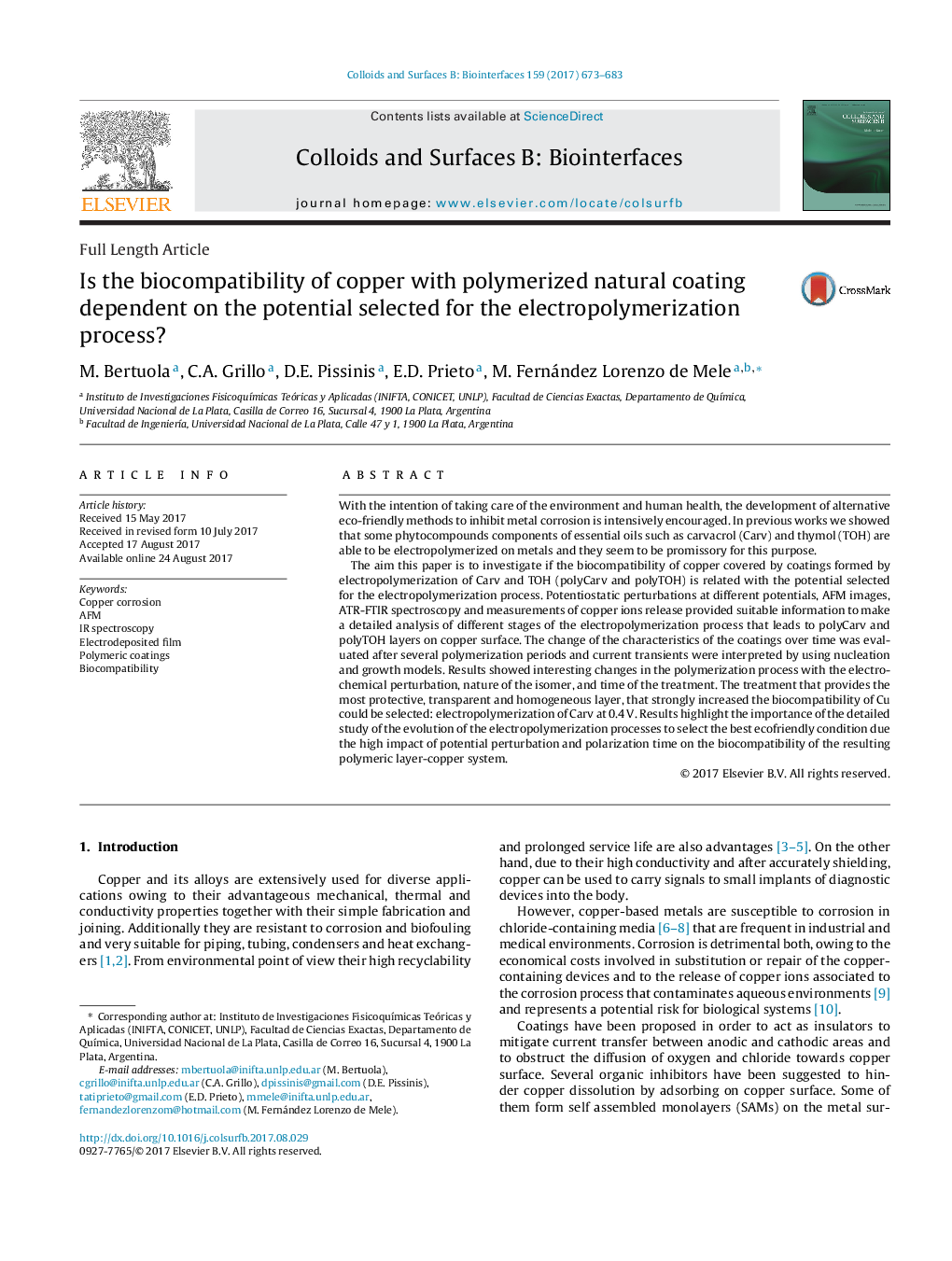| کد مقاله | کد نشریه | سال انتشار | مقاله انگلیسی | نسخه تمام متن |
|---|---|---|---|---|
| 4982985 | 1454245 | 2017 | 11 صفحه PDF | دانلود رایگان |
- Potentiostatic polymerization (Ps-P) of carvacrol (Carv) and thymol (TOH) was made.
- Ps-P current transients were interpreted by nucleation and growth mechanism.
- Polymeric layers of Carv are more protective, biocompatible and smooth than TOH's.
- Composition, roughness and structure of the poly-layers changed with Ps time.
- PsP of Carv at 0.4Â V is the best biocompatible condition for copper protection.
With the intention of taking care of the environment and human health, the development of alternative eco-friendly methods to inhibit metal corrosion is intensively encouraged. In previous works we showed that some phytocompounds components of essential oils such as carvacrol (Carv) and thymol (TOH) are able to be electropolymerized on metals and they seem to be promissory for this purpose.The aim this paper is to investigate if the biocompatibility of copper covered by coatings formed by electropolymerization of Carv and TOH (polyCarv and polyTOH) is related with the potential selected for the electropolymerization process. Potentiostatic perturbations at different potentials, AFM images, ATR-FTIR spectroscopy and measurements of copper ions release provided suitable information to make a detailed analysis of different stages of the electropolymerization process that leads to polyCarv and polyTOH layers on copper surface. The change of the characteristics of the coatings over time was evaluated after several polymerization periods and current transients were interpreted by using nucleation and growth models. Results showed interesting changes in the polymerization process with the electrochemical perturbation, nature of the isomer, and time of the treatment. The treatment that provides the most protective, transparent and homogeneous layer, that strongly increased the biocompatibility of Cu could be selected: electropolymerization of Carv at 0.4Â V. Results highlight the importance of the detailed study of the evolution of the electropolymerization processes to select the best ecofriendly condition due the high impact of potential perturbation and polarization time on the biocompatibility of the resulting polymeric layer-copper system.
142
Journal: Colloids and Surfaces B: Biointerfaces - Volume 159, 1 November 2017, Pages 673-683
